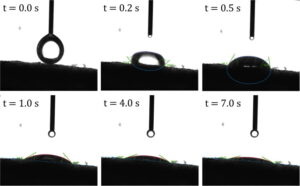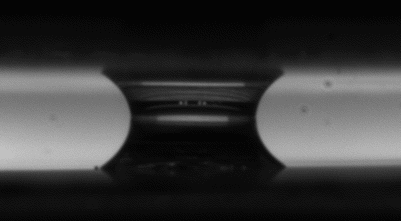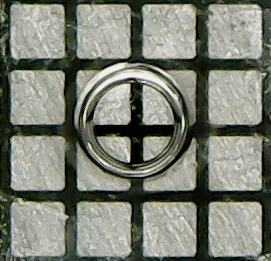Introduction
Capillary bridges form when a liquid is stretched between two solid surfaces. These bridges play an important role in many systems, such as water saturation in soil, inkjet printing, and the feeding of shorebirds but their motion is still not well understood. Capillary bridges containing particles are particularly complex and because of their impact on material properties such as hydrate viscosity, they are an important area of study. Our lab studies capillary bridge motion using experiments and simulations. In particular, we are studying the movement of the contact line between a liquid and a spherical solid in order to better understand the fundamental physics behind contact line motion. This has implications not just for capillary bridges but for many industrial processes where surface tension plays a dominant role.

Figure 1: Spreading dynamics of a water droplet on the hydrate surface. The system is immersed in cyclopentane. The hydrate surface is fully wetted by water. (Thomas 2021)
Our Research
Our lab conducts experiments in which the force exerted by a liquid bridge between glass plates is measured simultaneously with visualization of the detailed bridge shape. Air is the surrounding fluid. These bridges show hysteretic contact line motion, characterized by maximum and minimum contact angles. Analysis of the bridge shape has been performed to develop a model for the hysteresis; this analysis incorporates a resistive force and addresses the fundamental basis for this nonequilibrium contact line force in terms of the properties of the surface and their influence on the liquid-air interface.

Figure 2: Side view of capillary bridge with changing height

Figure 3: Top view of capillary bridge with changing height
References
- Contact angle measurements on cyclopentane hydratesF Thomas, D Dalmazzone, JF MorrisChemical Engineering Science 229, 116022. 2021
